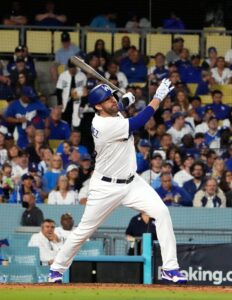The latest episode of the MLB Trade Rumors Podcast is now live on Spotify, Apple Podcasts, and wherever you get your podcasts! Make sure you subscribe as well! You can also use the player at this link to listen, if you don’t use Spotify or Apple for podcasts.
This week, host Darragh McDonald is joined by Steve Adams of MLB Trade Rumors to discuss…
- Shohei Ohtani of the Dodgers makes remarks about his former interpreter and the gambling investigation (1:20)
- The inner strife of the MLBPA seems to be fizzling out (14:35)
- We are discussing J.D. Martinez signing with the Mets when we are interrupted by… (18:30)
- Live breaking news of Jordan Montgomery agreeing to a deal with the Diamondbacks (20:25)
- Then we go back to Martinez and the Mets (25:00)
- Some more Montgomery and Diamondbacks talk (29:10)
- Rangers sign Michael Lorenzen instead of Montgomery (34:15)
- Wyatt Landford makes Opening Day roster with the Rangers but Jackson Holliday doesn’t make the Orioles (39:00)
- Rockies sign Ezequiel Tovar to an extension (45:10)
Plus, we answer your questions, including…
- Luis García Jr, Lance McCullers Jr, and Kendall Graveman of the Astros are likely out, at the very least, until mid-June. How come none of these guys are on the 60-day injured list? Do you seen the Astros moving them there and if so, when? (49:15)
- Do you think it’s possible that the league begins to follow the Angels and Rangers footsteps and call up recent draft picks as soon as they show any signs of potential? Also, do you think it is at all possible that teams start to call up teenagers? (52:25)
Check out our past episodes!
- Mutiny In The MLBPA, Blake Snell Signs With The Giants And The Dylan Cease Trade – listen here
- Injured Pitchers, Brayan Bello’s Extension, Mookie Betts At Shortstop And J.D. Davis – listen here
- The Giants Sign Matt Chapman, Zack Wheeler’s Extension, And Blake Snell And Jordan Montgomery Remain – listen here
The podcast intro and outro song “So Long” is provided courtesy of the band Showoff. Check out their Facebook page here!
